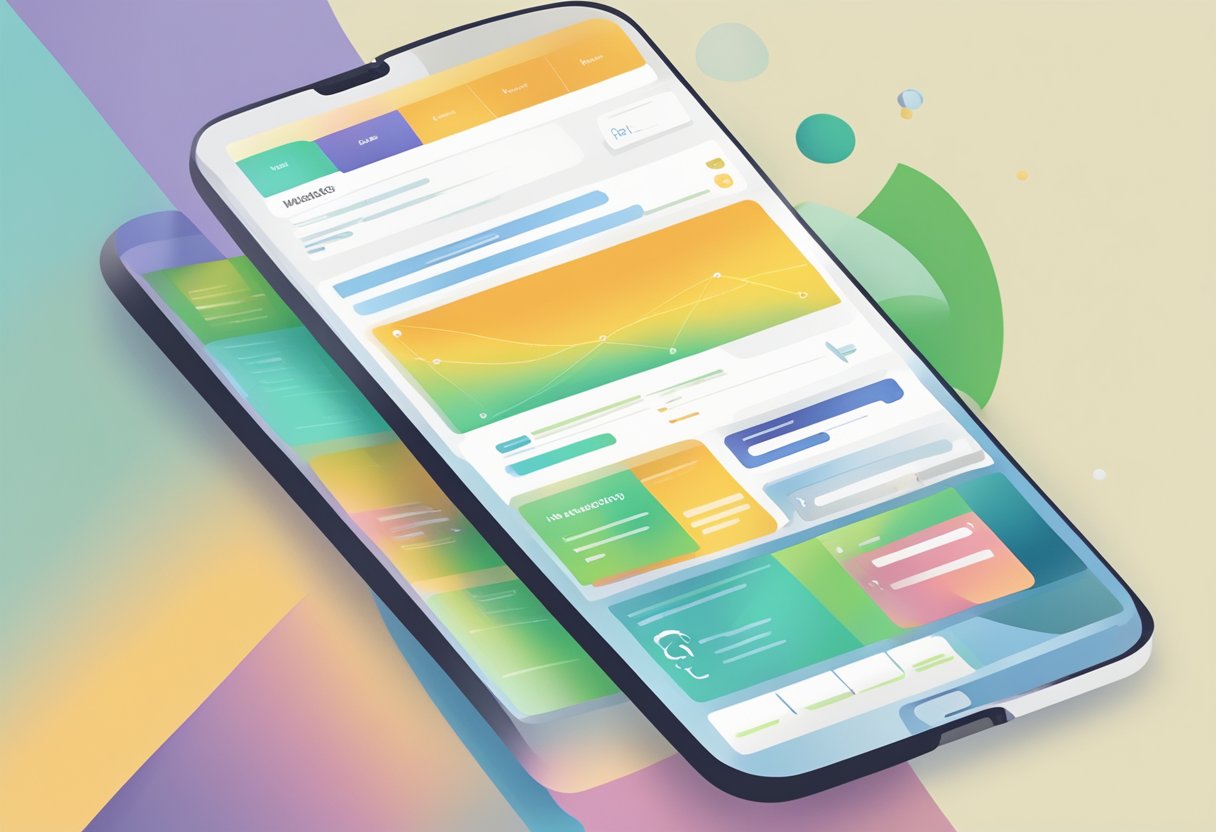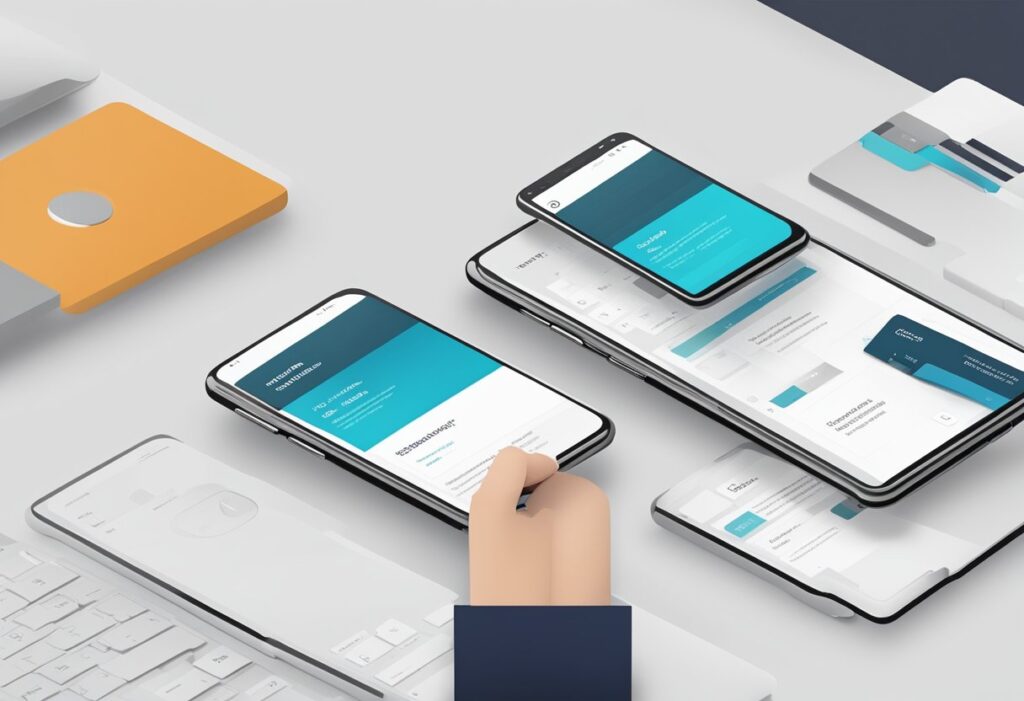Responsive and adaptive design are two of the most popular approaches used by web designers to optimize their mobile websites.
Both design approaches have their own set of advantages and disadvantages. It is important to understand the differences between them to choose the one that best suits your needs.
Responsive design is a design approach that allows a website to adapt to different screen sizes and resolutions. It uses a flexible grid system that adjusts the layout of a website based on the size of the screen.
This means that the website will look good on any device, regardless of its screen size.
Responsive design is a popular choice because it is easy to implement and maintain. However, it can be challenging to optimize a website for all screen sizes, and it may not be the best option for complex websites.
Adaptive design, on the other hand, is a design approach that uses multiple fixed layouts to optimize a website for different screen sizes. It detects the available space and selects the layout that is most appropriate for the screen.
Adaptive design is a good choice for complex websites because it allows designers to create a custom layout for each screen size. However, it can be more difficult to implement and maintain than responsive design.
Key Takeaways
- Responsive design is a design approach that allows a website to adapt to different screen sizes and resolutions.
- Adaptive design is a design approach that uses multiple fixed layouts to optimize a website for different screen sizes.
- Choosing between responsive and adaptive design depends on the complexity of the website and the designer’s preferences.
Understanding Responsive Design
Responsive design is a web design approach that aims to provide optimal viewing experiences across multiple devices. It is based on the core principles of fluidity, flexibility, and adaptability.
This section will cover the core principles of responsive web design and some of the techniques used to achieve it.
Core Principles of Responsive Web Design
The core principles of responsive web design are based on the idea that the website layout should adapt to the screen size of the device being used to view it.
This means that the website should be able to adjust its layout to fit different screen sizes, from desktop computers to smartphones.
To achieve this, responsive design relies on CSS and media queries. CSS is used to define the layout of the website, while media queries are used to specify different styles for different screen sizes.
The use of a flexible grid and flexible images is also important in responsive design, as they allow the website to adapt to different screen sizes.
Responsive Design Techniques
There are several techniques used in responsive design to ensure that the website is optimized for different screen sizes.
One of the most common techniques is the use of a flexible grid system, which allows the website to adjust its layout based on the size of the screen.
Another technique used in responsive design is the use of flexible images. This means that the images on the website are designed to be flexible, so that they can adjust to different screen sizes without distorting or losing quality.
In addition to these techniques, responsive design also focuses on optimizing the text on the website for different screen sizes.
This means that the font size, line spacing, and other text properties are adjusted to ensure that the text is easy to read on different devices.
Exploring Adaptive Design
Adaptive design is a web design strategy that focuses on creating a website that can adapt to different screen sizes. It is an approach that involves creating multiple versions of a website, each optimized for a specific screen size.
Adaptive Design Strategies
One of the main strategies behind adaptive design is creating static layouts that are optimized for specific screen sizes.
This means that instead of creating a single website that is optimized for all screen sizes, designers create multiple versions of the website, each optimized for a specific screen size.
This approach ensures that users have a consistent experience regardless of the device they are using to access the website.
Another strategy used in adaptive design is progressive enhancement. This involves starting with a basic version of the website that is optimized for mobile devices and then adding additional features as the screen size increases.
This approach ensures that users have access to all the features of the website regardless of the device they are using.
Technologies Behind Adaptive Design
Adaptive design relies on a number of technologies to ensure that websites are optimized for different screen sizes.
One of the most important technologies is media queries. Media queries allow designers to create different styles for different screen sizes. This means that the website can adapt to different screen sizes without the need for separate versions of the website.
Another important technology used in adaptive design is server-side detection.
Server-side detection involves detecting the device that is accessing the website and then serving up the appropriate version of the website. This approach ensures that users have the best possible experience regardless of the device they are using.
Comparing Design Approaches

Differences in Layout and Flexibility
One of the main differences between responsive and adaptive design approaches is in their layout and flexibility.
Responsive design uses a fluid grid system that allows content to adjust to different screen sizes, while adaptive design uses pre-determined layouts that are tailored to specific device sizes.
Responsive design is more flexible and can adapt to any screen size, making it a good choice for websites with a lot of content. It also allows for a consistent user experience across all devices. However, this flexibility can sometimes result in a loss of control over the layout, leading to issues with readability and usability.
Adaptive design, on the other hand, offers more control over the layout and allows for a tailor-made experience for specific devices.
This can result in a better user experience, especially on mobile devices where screen real estate is limited. However, it can also lead to a less consistent experience across different devices and may require more resources to maintain multiple layouts.
Impact on User Experience
Both responsive and adaptive design approaches have an impact on user experience.
Responsive design can sometimes result in a slower load time due to the need to load all content, regardless of device size. However, this can be mitigated by optimizing images and using caching techniques.
Adaptive design, by contrast, can result in a faster load time due to the smaller file sizes of tailored layouts. However, it can also result in a less consistent experience across devices, which can be confusing for users.
Design Implementation and Best Practices

Coding and Development Techniques
When designing a mobile website, developers must choose between responsive and adaptive design.
Responsive design uses a single codebase that adapts to the screen size of any device. Adaptive design, on the other hand, uses multiple codebases that are optimized for specific screen sizes.
For developers, responsive design is generally easier to implement and maintain. It requires less coding and development time, and is more flexible in terms of design changes.
However, adaptive design can provide a more optimized experience for users on specific devices, especially when it comes to load times.
To optimize load times, developers can use techniques such as lazy loading, which delays the loading of images and other non-essential content until the user scrolls to them.
They can also use caching to store frequently accessed data locally on the user’s device, reducing download times.
Optimizing for Performance
When it comes to mobile website design, performance is key. Slow load times can negatively impact user experience and even hurt a website’s search engine rankings.
To optimize for performance, developers should focus on reducing download times.
This can be achieved by minimizing the size of images and other media, using compression techniques, and minimizing the use of external scripts and plugins.
In addition, developers should optimize for SEO by using clean, semantic code and following best practices for mobile website design.
This includes using responsive images, optimizing for touch input, and ensuring that the website is accessible to users with disabilities.
Challenges and Considerations

Budget and Resource Allocation
When designing mobile websites, one of the biggest challenges is budget and resource allocation.
Responsive design is generally more budget-friendly than adaptive design because it involves creating a single website that adapts to different screen sizes.
Adaptive design, on the other hand, requires creating multiple versions of the same website, each optimized for a specific screen size.
However, it is worth noting that responsive design can be more resource-intensive because it involves serving up the same website to all devices, regardless of their capabilities.
This can result in slower load times on older devices, which may not have the processing power to handle a complex website.
Maintaining Consistency Across Devices
Another challenge of mobile website design is maintaining consistency across devices.
With so many different screen sizes and resolutions to consider, it can be difficult to ensure that your website looks and functions the same on all devices.
Responsive design can help to address this challenge by adapting the layout of your website to fit the screen size of the device it is being viewed on. However, this can sometimes result in a less-than-optimal user experience, particularly on smaller screens.
Adaptive design, on the other hand, allows you to create a separate version of your website for each screen size, ensuring that your website looks and functions the same on all devices.
However, this approach can be more time-consuming and resource-intensive, as it requires creating multiple versions of the same website.
The Role of Devices and Screen Sizes

When designing for mobile websites, one of the key considerations is the variety of devices and screen sizes that users may have.
The design needs to be adaptable to different devices and screen sizes to ensure that the website is accessible and user-friendly across all platforms.
Adapting to Different Devices
Adaptive design aims to create a tailored experience for each device. This means that the website will detect the device and serve a version of the website that is optimized for that device.
For example, a website may have different stored versions for desktop, tablet, and mobile devices. This approach can provide a more customized experience for users, but it requires more resources to develop and maintain.
Responsive design, on the other hand, aims to create a fluid experience that adapts to any screen size. This approach uses flexible layouts and fluid grids to ensure that the website looks good on any device.
Responsive design is generally easier to develop and maintain, but it may not provide the same level of customization for each device.
Responsive vs. Adaptive for Various Screens
When designing for various screens, it is important to consider which approach is most appropriate.
Responsive design is generally better suited for websites that need to be accessible on a wide range of devices, including wearables.
Adaptive design, on the other hand, may be more appropriate for websites that need to provide a more customized experience for each device.
For example, a website that provides a complex tool or application may benefit from adaptive design, as it can provide a tailored experience for each device.
A website that provides simple information, such as a news website, may be better suited for responsive design, as it can ensure that the content is easily accessible on any device.
SEO and Marketing Implications

Search Engine Optimization with Responsive and Adaptive
When it comes to mobile web design, search engine optimization (SEO) is an essential factor to consider.
Search engines like Google prioritize mobile-friendly sites, and both responsive and adaptive designs serve to enhance mobile user experience.
With responsive design, the benefit lies in having a single URL for all devices, which simplifies the indexing process for search engines.
This means that any changes made to the website will apply to all devices, which can save time and resources.
Additionally, responsive design tends to perform better with SEO, as search engines give more consideration to mobile-friendly sites.
On the other hand, adaptive design allows for more control over the layout and content for different devices.
This can be beneficial for SEO, as it allows for more targeted optimization for specific devices. However, it can also require more resources and time to maintain, as changes need to be made to each version of the website.
Advertising and Content Strategy
Responsive and adaptive designs can also have implications for advertising and content strategy.
With responsive design, advertisers can create a single campaign that targets all devices, which can save time and resources.
Additionally, having a single URL for all devices can simplify the tracking and reporting of advertising campaigns.
With adaptive design, advertisers can create more targeted campaigns for specific devices, which can lead to better conversion rates.
However, this can also require more resources and time to create and maintain multiple campaigns.
When it comes to content management systems, both responsive and adaptive designs can work well.
However, it is important to choose a CMS that is compatible with the chosen design approach. Some CMS platforms may work better with responsive design, while others may work better with adaptive design.
Future Trends and Evolution

As technology advances, the world of mobile web design is constantly evolving. The future of responsive and adaptive design will continue to shape the way we approach mobile web development.
One trend that is emerging is the use of progressive enhancement in responsive design. This approach focuses on building a solid foundation of basic functionality that works across all devices, and then adding more advanced features for devices that can support them.
This ensures that all users have access to the core functionality of a site, regardless of their device’s capabilities.
Another trend is the increasing focus on UX design in both responsive and adaptive design. As mobile devices become more prevalent, users expect a seamless and intuitive experience when browsing the web.
This means that designers must consider not only the visual design of a site, but also the user’s journey through the site and how they interact with it.
In terms of philosophy, there is a growing emphasis on designing for the reality of mobile usage. This means considering factors such as limited screen space, slower internet speeds, and the need for quick access to information.
Designers must create sites that are optimized for mobile use, rather than simply scaling down desktop designs.
Looking ahead, it is likely that adaptive design will continue to gain popularity over responsive design. Adaptive design allows for more targeted design and optimization for specific devices, resulting in a better user experience.
However, this does not mean that responsive design will become obsolete. Rather, designers will need to consider both approaches and choose the one that best fits their project’s needs.



